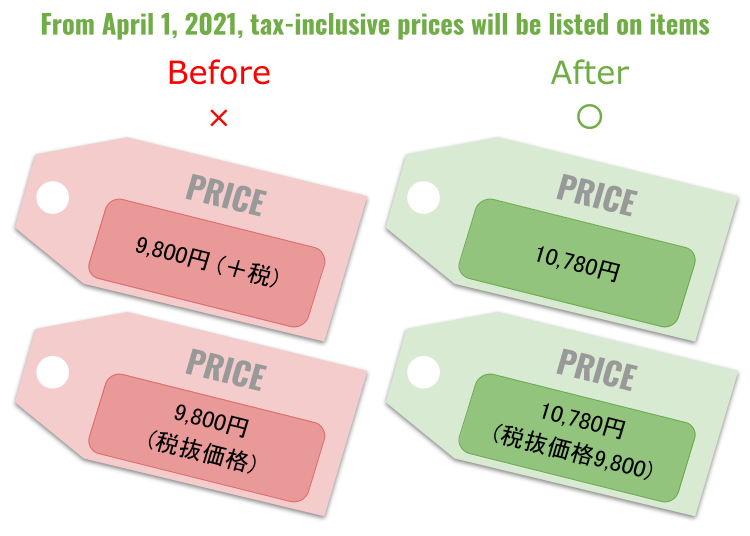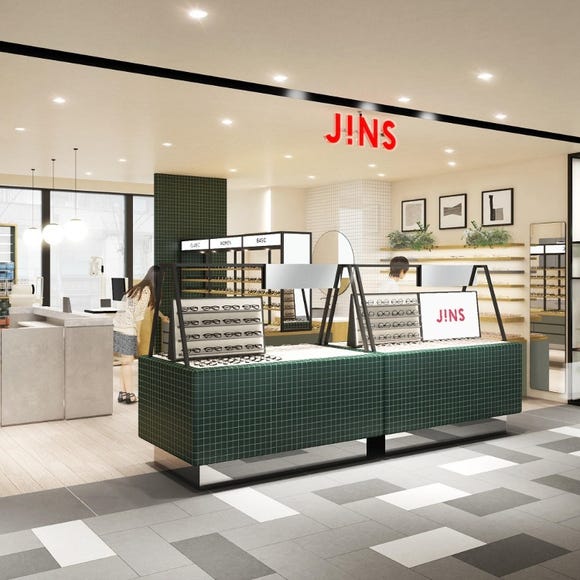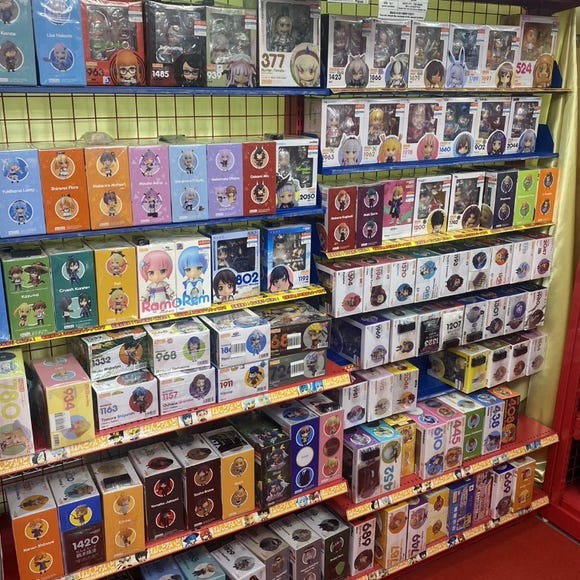
Starting April 1, 2021, it will be mandatory for all stores and businesses in Japan to show the tax-inclusive price of products. Many people are curious about the reason for this sudden change and how these prices will be displayed.
In Japan, the initial taxing of consumer products started in 1989. Since then, there have been periods of time where the prices of products have been displayed with and without sales tax. When the government decided to steadily increase this tax throughout two phases in 2013, it implemented the Act on Special Measures Concerning Taxation.
To make the transition into increased sales tax go smoothly, this act gave businesses a choice to display prices either including or excluding sales tax. March 31, 2021, is when it was originally scheduled to be annulled, therefore making all prices once again tax-inclusive.
As the date for tax-inclusive pricing approaches, there has been some confusion as to who must follow this new system and how prices should be displayed.
According to the National Tax Agency, any taxable business or product must display the tax-inclusive sales price to all of its consumers starting from April 1.
Examples of this include the prices shown on price tags, price stickers leaflets, posters, newspaper ads, online shopping adverts, as well as products advertised on TV.
The new act applies to businesses that previously have and will continue to display the prices of their products. If a business has never advertised or displayed the price of their products or services, they are exempt from this policy.
Below is an example of what tax-inclusive pricing will look like.

Although the change to tax-inclusive pricing has businesses scrambling to change their menus, price tags, catalogs, etc., it is very convenient for consumers.
From now on, consumers can look at a price tag and know that the price shown is exactly what they’ll be paying for. With all businesses following one system, it will make it easier to know how much you’ll pay at the checkout!
Written by Mika Inoue
*Reference 1: 消費税における「総額表示方式」の概要とその特例 : 財務省 (mof.go.jp)
*Reference 2: No.6902 「総額表示」の義務付け|国税庁 (nta.go.jp)
- Category
*Prices and options mentioned are subject to change.
*Unless stated otherwise, all prices include tax.
Popular Tours & Activitiess
Recommended places for you
-
Goods

Maruzen Nihonbashi Store
Other Shopping
Tokyo Station
-
Goods

John's Blend Kyoto Nishiki-Ichiba Store
Other Shopping
Gion, Kawaramachi, Kiyomizu-dera Temple
-
Goods

Hankyu Department Store Umeda Main Store 7th floor eyeglass salon
Other Shopping
Umeda, Osaka Station, Kitashinchi
-

JINS Marunouchi Store
Other Shopping
Tokyo Station
-
Events

FANCL GINZA SQUARE
Other Shopping
Ginza
-
Goods

OTACHU.AKIHABARA
Other Shopping
Akihabara
-

LaLaport TOKYO-BAY North Building Now Open: Shop, Dine & Enjoy Events at LaLa arena, Just 2 Stops from Disney
by: Wemmy Chau
-

Black Friday 2025: These Are THE Japan Travel & Shopping Deals to Check Out
-
Ad

Walk in the Footsteps of Believers: A 4-Day Pilgrimage Across Goto Islands, Nagasaki Prefecture
by: Yohei Kato
-

2025 Autumn Colors Report: Kurobe Gorge Nearing Peak
by: Timothy Sullivan
-

Enjoy Japan's Gorgeous Winter Lights! Ride the Romancecar to Shonan no Hoseki Illumination
by: Guest Contributor
-

2025 Japan Autumn Color Report: Tokyo's Ginkgo Trees Starting to Glow
by: Timothy Sullivan
-

3 Must-Visit Akihabara Figure Shops for Characters, Anime Figures & More!
-

Ueno Station Area Guide: Fun Ways to Explore Tokyo's Popular Destination (Area Map & Sightseeing Tips)
-

Must-Buy Souvenirs: Contemporary Culture Edition
-

Ueno's Panda Sweets: Five Unique and Delicious Souvenirs of Tokyo's Favorite Zoo Inhabitants
-

Secrets to Shopping in Japan: Guide to Annual Sales in Japan & Where to Shop
by: Miyu Shimada
-

Where to Buy Manga in Tokyo? 5 Collectors Share Tips & Favorite Spots
by: David McElhinney
- #best sushi japan
- #what to do in odaiba
- #what to bring to japan
- #new years in tokyo
- #best ramen japan
- #what to buy in ameyoko
- #japanese nail trends
- #things to do japan
- #onsen tattoo friendly tokyo
- #daiso
- #best coffee japan
- #best japanese soft drinks
- #best yakiniku japan
- #japanese fashion culture
- #japanese convenience store snacks












